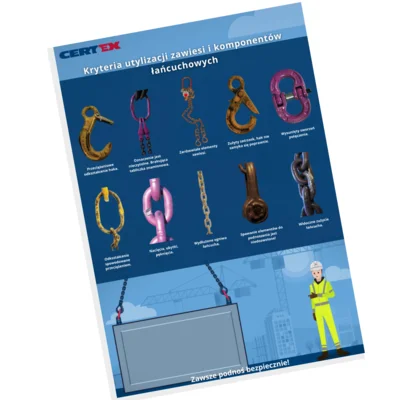
Here you will find practical articles about chain slings, their construction, selection, and safe use. We have prepared content that will help you better understand how slings work, what components they consist of, and when they should be serviced or withdrawn from use.
Our goal is to make choosing the right sling simple and its operation safe and compliant with standards. Use our tips if you want to work efficiently and avoid mistakes during lifting operations.
Need additional technical support? Contact us – we’ll be happy to help!
What are chain slings and what are they used for?
Find out what chain slings are, how they are constructed, and what they are used for. Learn the differences between chain strength classes, as well as which standards and certifications define their safety and quality.
Types of chain slings
Discover the available configurations of chain slings – from simple single- and double-leg slings to more advanced four-leg adjustable slings. Find out which solution will work best in your industry and working conditions.
Safety and use of chain slings
Learn more about the inspection and repair of chain slings, as well as how to use them safely on a daily basis. Check what responsibilities lie with the user regarding maintenance and documentation of inspections.
Rejection criteria for chain slings
Learn about the most common damages to slings that disqualify them from further use. Find out which signs of wear, cracks, or deformations are dangerous, and who should decide and when to withdraw a sling from service.
Components and accessories
Learn what components make up chain slings and what functions are performed by hooks, links, shortening devices, or connectors. See how modern systems such as VIP or ICE increase safety and comfort when working with heavy loads.
Selection and configuration of chain slings
See how to properly select a chain sling according to the weight, shape, and lifting method of the load. Learn why the angle of sling legs is crucial and how to avoid overloading through the right configuration.




